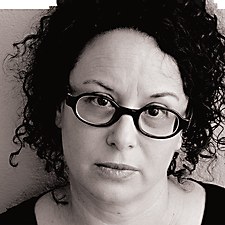“The volume of images was amazing,” says juror Jeremy Dimmock. “When you consider that the almost 4,000 entries represent maybe 5 percent of the illustration work created in the past year, then the field of illustration, like print itself, is doing just fine in our digital world.”
“My overall impressions of the illustration entries were very positive,” juror Michele Lovison says. “I saw many creative and original works, and I particularly appreciated the use of innovative techniques and attention to detail.”
“Going over such a concentrated mass of illustrations was an overwhelming and humbling experience to me,” says juror Merav Salomon. “So much talent!”
“I was surprised by the consistent quality of the entries,” juror André Carrilho says. “Other competitions have a bigger difference in quality from the best to the worst entry.”
Several jurors commented on the diversity of stylistic approaches in the entries.
“One thing that surprised me was the variety of styles and themes present in the illustrations, from minimalism to hyperrealism, from humor to drama,” says Lovison.
“I was struck by the variety of styles represented by this year’s entries,” juror Greg Breeding says. “There seemed to be less strands of derivative work than [I’d expected], and I was especially impressed by the inventiveness of the international entries.”
“A lot more Chinese cultural references [came] through,” says juror Desdemona McCannon.
“The amount of entries from Asia and the Far East was wonderful,” Dimmock says. “It seemed the most interesting work in illustration is and will be coming out of Asia.”
Other observations about this year’s entries encompassed both form and usage.
“The standard of draftsmanship in the student entries was very high and also among the digitally enhanced work,” says McCannon.
“I found a few of the digital entries [transcended] their medium genre to become wonderful works of fine art, which were very impressive,” juror Kadir Nelson says.
“I saw many new and interesting things, particularly advanced digital techniques and experimentation with unusual forms and colors,” says Lovison.
“There are a few modern trends in illustration that I really like, especially color palettes that are bright and a little off, [and] drawings that are not so ‘well crafted’ and incorporate a certain punk, handmade and chaotic quality,” Carrilho says.
“Difficult concepts, like optical challenges or being an immigrant or an only child, were approached imaginatively with a great use of visual shorthand to create extended metaphors that worked as micronarratives unpacking ideas,” says McCannon.
“I took notice of the different mood of some of the marketing pieces related to the pandemic and the ways in which this translated to cultural changes,” says juror Nicole Caputo.
“I was surprised that there was not more reportage or political work,” McCannon says. “I found it interesting that illustration is not reflecting ‘reality’ but perhaps offering an escape from it.”
In addition to my questions about their impressions of the work, I also asked the jurors to share their biggest disappointments.
“I would have liked to have seen more works that dealt with important social and political themes,” says Lovison.
“It felt like 10 percent of the images were about the Ukraine war,” Dimmock says. “It’s hard to be original when 200 other images are dealing with the same subject, no matter how impactful.”
“Although I appreciated the entries very much, my biggest disappointment was [not seeing] more work that was witty and clever,” says Breeding. “There were some, to be sure, but I expected more pieces with compelling visual metaphors.”
“Too many of the same themes, topics and overall lack of originality in many of the subjects,” Dimmock says. “Not enough risk taking was on display.”
“I find the lack of traditional painting in illustration to be a bit disappointing, but I do understand that it has to do with accessibility and efficiency,” says Nelson. “If history is our greatest teacher, I have little doubt, regrettably, that digital painting is the future of illustration.”
“Where did the eyes go?” asks Salomon. “I felt a bit uncomfortable with the stylistic trend of the universal digital depiction of humans that went too far in erasing individuality. So many illustrations from completely different places around the world [looked] similar and mostly depicted people without any facial features—especially without eyes.”
Lastly, I asked the jurors for their perspective on what may be in store for the field of illustration.
“I believe that illustration is becoming increasingly important as a form of art and communication, thanks to its ability to capture attention and express complex ideas visually,” Lovison says.
“I think that most illustrations will become digital and likely animated,” says Nelson. “Given its current trajectory, as well as the fact that mobile platforms are making it easier to support, digital painting will become even more commonplace.”
“I hope that we’ll see more and more creators focusing on ways to tell personal stories, rediscovering the joys of hand-drawn work, and embracing the randomness of putting paper, ink and a human mind together,” Carrilho says. “Illustration won’t go away, but we all may need to figure out our place in this new world we’re creating.”
“AI will seriously challenge the profession, especially editorial,” McCannon says.
“I think it’s easy to be pessimistic with the recent advances of AI,” says Jeremy Dimmock. “And with AI, the craft aspect of illustration feels like it’s at a tipping point. I think illustrators [will] take the skills they’ve acquired in visual communication and move beyond communicating requests from art directors and take on the art director role themselves. They will need to explore subjects and areas where they own the IP and are marketing their own products.”
“Illustration is the most resilient, stable and agile branch of visual communications,” Salomon says. “All throughout history, it [adapts] to changes and maintains its relevance and agency. This goes also for the digital revolution [with] new image-making tools, the accessibility of animation tools and, now, AI image generators.”
“Illustrators who are brave enough to jump into new technology and take on learning how to create art in AR and VR worlds, who look at change as an opportunity, who embrace the uncertainty with an entrepreneurial mindset will be more successful and have a chance at making a greater impact than at any other point in history,” says Dimmock.
“The ways to imagine, create, produce and distribute are in constant change, but the human sentiment for stories and comprehensive interpretation of reality, whether external or internal, hasn’t changed at all,” Salomon says. “The need for illustration as a communication medium will remain desirable and on demand.”
A minimum of seven out of ten votes was required for a project to be awarded in this year’s competition. Judges were not permitted to vote on projects with which they were directly involved; I voted in their stead. I would like to extend our grateful appreciation to our jurors for their conscientious efforts in selecting our 64th Illustration Annual. —Patrick Coyne ca

Greg Breeding is cofounder and president of Charlottesville, Virginia–based design company Journey Group. Serving clients and causes since 1992, Journey Group collaborates with cultural institutions, humani-tarian groups and educational organizations. Having studied design and typography at VCU Arts in Richmond, Virginia, Breeding also brings his decidedly Swiss perspective on design for the United States Postal Service. Since 2012, Breeding has served as art director for postage stamp design with some 100 stamps issued to date. He and his wife live in Charlottesville, Virginia, where they passionately scheme for time with their grandchildren.

Nicole Caputo is the vice president, creative director of publishing companies Catapult, Counter-point Press and Soft Skull Press. Formerly vice president, creative director at Hachette Book Group, she also cofounded She Designs Books, an organization that celebrates women in book design. Caputo has received awards from AIGA New York, Art Director’s Club, Communication Arts, HOW, London International Creative Competition, the National Gold Ink Awards, the New York Book Show, PRINT, the Publishing Professionals Network and Type Director’s Club. She lives and works in the Catskills, with her husband and two dogs.

André Carrilho has worked as a professional illustrator, editorial cartoonist, animator and caricature artist for more than 30 years, collaborating with a wide list of publications that include the Los Angeles magazine, New Statesman, New York magazine, New York Times, The New Yorker, Vanity Fair and Wall Street Journal. In 2002, the Society for News Design awarded him the Gold Award for Illustrator’s Portfolio, one of the more than 100 honors and awards he has received. Carrilho’s first book, The Girl with the Occupied Eyes, won the Gold Medal at the Society of Illustrators, the National Prize in Illustration (Portugal) and the Grand Prix at Hiii Illustration (China).

Jeremy Dimmock is cofounder and creative director of Toronto-based animation studio Polyester Studio, developing animated campaigns that help meaningful brands share their personality with the world. He also loves working with leading entertainment properties like Dreamworks, Fuel TV, Nickelodeon and Paramount—and still dreams of one day working on Sesame Street. Over the years, he has received a variety of lovely, oversized paperweights from Advertising & Design Club of Canada, Applied Arts, Art Director’s Club, Communication Arts and D&AD. Among his first achievements was a drawing he made on a parking ticket, which his mom proudly hung on the refrigerator.

Maria Keehan began her design career as a type-setter for the glamorous plastic license plate-frame business. She upgraded her endeavors to design a trade magazine about the equally glamorous telemarketing industry. Luckily, an art director named Margery Peters saw something besides desperation in Keehan’s attempts to get a job at Time Inc.’s magazines. Keehan designed at Fortune magazine for many years before leaving New York to become creative director of Smithsonian magazine, in Washington, DC, where she has been ever since. She has a college-aged daughter whose face she cropped out of the image she submitted as her headshot.

Michele Lovison is a Milan-based art director at Corriere della Sera, the bestselling Italian daily newspaper. A professional journalist with international editorial experience and skilled in newspaper, magazine, book and digital design, Lovison makes illustrations an integral part of his projects. He collaborates with some of the best artists in publishing on the editorial projects he manages, whether for newspapers, magazines, websites or podcasts. Lovison also directs photoshoots and photographers, is passionate about typography and loves working in the newsroom. He has a master’s degree in design, graphic and visual communication from Politecnico di Milano.

Desdemona McCannon is a writer, curator, creative practitioner and academic interested in the cultural and historical significance of illustration. Her illustration work has been published in many different design and publishing contexts, including children’s books, poetry and music publishing. She is principal lecturer in illustration at the University of Worcester and the principal editor of the peer-reviewed Journal of Illustration. She sits on the steering committee for the Illustration Research Network and helps organize its yearly international symposia, which will be hosted by Washington University in St. Louis in 2023.

Kadir Nelson is an artist, illustrator and author based in Los Angeles, California. His paintings reside in the permanent collections of several notable institutions and museums. Nelson’s striking artwork also frequently graces the covers of The New Yorker magazine, paying tribute to historical figures, New York City and popular American life. In 2020, he was awarded the Caldecott Medal and the Coretta Scott King Illustrator Award for the book, The Undefeated, written by Kwame Alexander. Currently, he has more than 30 children’s titles in print with a global circulation in the millions and in multiple languages.

Jane Piampiano has been the manager of art production and member of the creative and production communities at ad agency DDB NY for most of her career. Working alongside very passionate and talented creatives has nurtured her deep appreciation of illustration and provided the opportunity to collaborate with many gifted, inspiring artists on countless ad campaigns. Piampiano always gets excited by the challenge to facilitate a happy marriage between artist and assignment. Her favorite campaigns were for Cotton Inc., Hertz, New York Lottery and Tribeca Film Festival. A lifelong New Yorker, Piampiano lives in Brooklyn with her husband and daughter.

Merav Salomon is an illustrator, author and book artist based in Tel Aviv, Israel. She is a graduate of and a professor of illus-tration at the Bezalel Academy for Art & Design in Jerusalem. In 2016, she founded Salomon & Daughters, an independent publishing house promoting picture books for grownups. Her work has been exhibited worldwide in museums, galleries and festivals, such as the German Illustration Museum in Troisdorf, Graphixx, Leipzig International Book Fair and MOCCA Fest, and has won several international awards from the Association of Illustrators, Communication Arts and the Society of Illustrators.